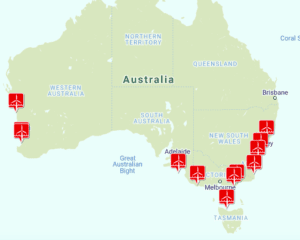 Carbon emissions are often considered in the future tense: the G7 aims to reduce future emissions and countries attending the Paris climate summit in December will pledge to make future carbon cuts. Amid all the future talk, the World Resources Institute (WRI) has released new information about the present — an infographic and huge databaseof the world’s current greenhouse gas emissions.
Carbon emissions are often considered in the future tense: the G7 aims to reduce future emissions and countries attending the Paris climate summit in December will pledge to make future carbon cuts. Amid all the future talk, the World Resources Institute (WRI) has released new information about the present — an infographic and huge databaseof the world’s current greenhouse gas emissions.
Based on data from the WRI’s CAIT Climate Data Explorer, the graphic shows emissions data from 2012 by country. As a whole, the world emitted 42,386 megatonnes of greenhouse gases. Here’s how that number breaks down.
The top 10 list of emitters is no surprise. It includes China, the U.S., European Union 28, India, Russia, Japan, Brazil, Indonesia, Mexico and Iran. Together, they emit twice as much as the other 175 countries in the data, accounting for 72 percent of the globe’s emissions. The top two alone, China and the U.S., account for more than one-third of the world’s emissions.
Six of the top 10 emitters are developing countries. China, India, Indonesia, Brazil, Mexico and Iran account for 38 percent of the world’s emissions. While the lowest 100 countries emit less than 3 percent of the globe’s greenhouse gases.
The energy sector makes up about 76 percent of the world’s emissions. Of the countries with energy data available, three-quarters of them attribute a majority of their emissions to energy. The projected rise of wind and solar energy in the next 25 years is likely to reduce the impact of the energy sector. Agriculture and industry are the other largest sectors that add to global emissions.
The small South Asian country Brunei has the highest per capita emissions in the world with almost 49 tons per person. Though on the world scale, the country only contributed 0.04 percent of emissions. Of the top 10 emitters, the U.S. remains the highest, with nearly 20 tons per capita in 2012.
Source: Climate Central. Reproduced with permission.









